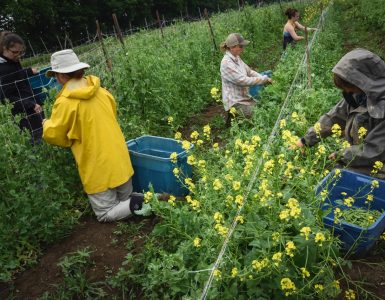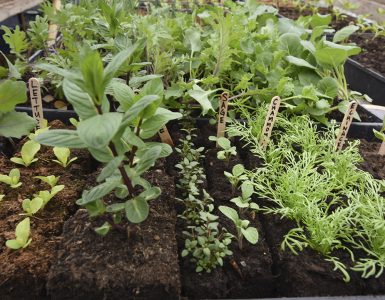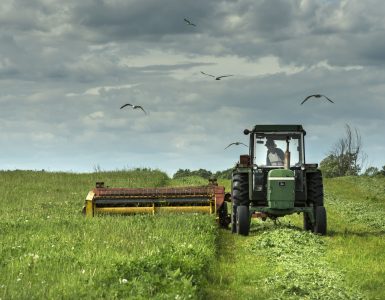Every year at the end of our growing season, we survey our Community Shared Agriculture members to see what vegetables people liked best. Over the last eight years we’ve approached a kind of equilibrium: for any given vegetable a few people would like a bit more, a few would be happy with less, most like the amount they get.
There are few exceptions, especially: broccoli. People just can’t get enough broccoli. From the perspective of the organic farmer, this is a little strange. Partly because broccoli isn’t especially easy to grow. It takes up a lot of space in the garden, which means it takes more time and work for extra plowing, weeding, and irrigation. And its yields are small compared to other members of the Brassica family (like kale, cabbage, or kohlrabi).
So when my partner Emily is making her garden plan each winter, every additional
serving of broccoli we harvest means subtracting servings of half a dozen other crops. She’s explained this to our members, but if asked people still say, “Well, we wouldn’t mind some more broccoli.”
How did broccoli get to be so popular? A hundred years ago, when most families still had their own gardens, broccoli was largely ignored in the English-speaking world in favour of its more productive relatives, like kale.
Kale has such reliable and incredible yield that it was a staple, especially in Scottish culture. Historically, Scots would build special walled gardens called “kale yards” to protect their kale plantings from harsh weather. Kale was so important that in old Scottish vernacular, “kail” also referred to food in general. And kale has undergone a sort of renaissance in recent years, becoming very popular among certain demographics. But it has nothing like the mainstream of broccoli.
It’s not just our CSA members who like broccoli.
Agriculture and Agri-Food Canada lists broccoli among the major field vegetables grown for fresh eating. It doesn’t compete with carrots, corn, or cabbage in terms of production by tonne. But at over 32 million kilograms (in 2010), more field broccoli is grown in Canada for the fresh market than tomatoes or head lettuce or peppers. The broccoli harvest far outweighs fresh beans, spinach, and baby carrot harvests combined.
Broccoli as a crop goes back to the time of the Roman Empire, and has been popular on the Italian peninsula since then. But the English-speaking world was pretty unfamiliar with it until the 20th century.
When Italian immigrants tried to market broccoli in the US in the 1920s, they experienced push-back. Racism against Italians meant that some people saw broccoli as a strange, “foreign” vegetable.
But advertising campaigns and radio spots began to win the public over. The strangeness of broccoli became an asset; some began to see it as an exciting
new vegetable.
Even after the Second World War, however, broccoli was on the margins for most North Americans, partly due to a distribution problem. Other members of the Brassica family are tougher. Cabbage stores incredibly well, either fresh or pickled, and can be shipped over distance.
But broccoli stores terribly by most traditional methods; it wilts after a few days without refrigeration, and if you try to can it you’ll end up with unpalatable mush.
But you can freeze it. The rise of refrigeration after the Second World War, and the development of “cold chains” brought good quality vegetables from the field to distant eaters. (In Canada, broccoli is the now third most popular frozen vegetable, after carrots and peas.)
But the real boon for broccoli was the push for healthy eating around the 1970s. Research showed that broccoli (and its relatives) were extremely nutritious, and very high in Vitamin A among other things. So health-conscious parents made sure to serve their kids broccoli, because broccoli is good for you.
Since 1980, the eating of fresh broccoli has quadrupled in North America. Kids who were raised in the 70s and 80s are still eating broccoli, and some of them are having families and feeding it to their own kids.
But health factors aside, I think kids realize that broccoli has character. A few years ago I was talking to some Inuit kids in Nunavut, where imported fresh vegetables are incredibly expensive. Salads aren’t a big part of Inuit culture, but even those kids were excited about broccoli, because it looked like “tiny little trees.” That distinctiveness, more than any of the nutritional research, bodes well for the future of broccoli. But let’s not forget the stalwart and productive kale, which may one day be a staple again.
Aric McBay is a farmer and author. He lives and works at a mixed family farm with a dairy herd and a vegetable operation.







